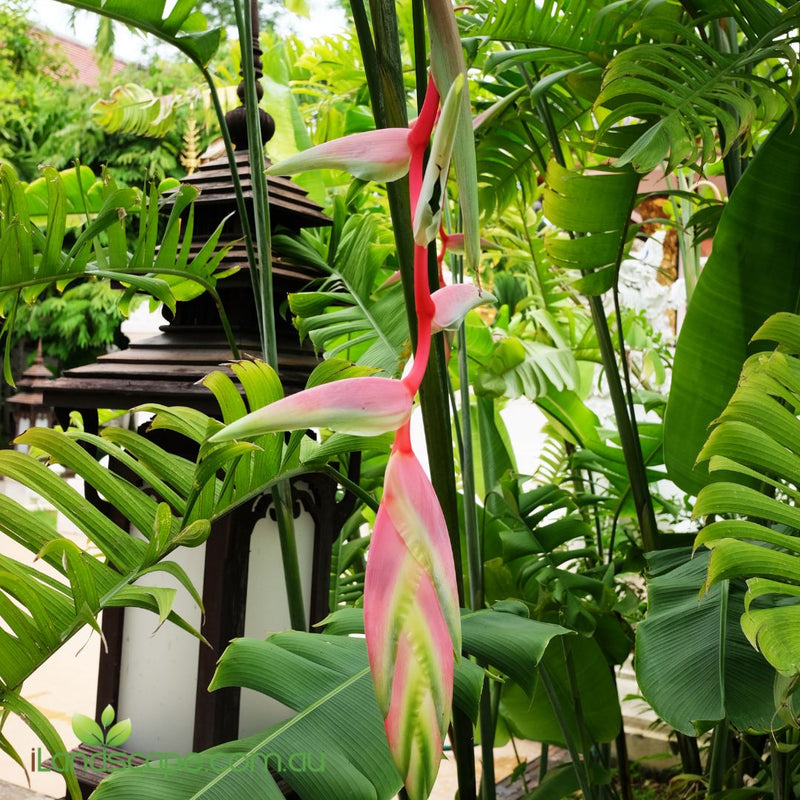Pieris Temple Bells, a stunning evergreen shrub renowned for its graceful, bell-shaped flowers and glossy foliage. Ideal for adding year-round interest to any landscape, Pieris Temple Bells thrives in partial shade and well-drained soil. With its compact growth habit and vibrant foliage that emerges bronzy-red before maturing to deep green, this versatile plant makes a striking focal point in borders, containers, or woodland gardens.
Description: Pieris japonica 'Temple Bells', commonly known as Temple Bells Pieris, is an evergreen shrub admired for its cascading clusters of bell-shaped flowers and attractive foliage. This plant is valued for its year-round interest, including its vibrant new growth and elegant blooms.
Flowers:
-
Blooms: Produces abundant clusters of small, bell-shaped white flowers that hang in graceful, drooping racemes. The flowers appear in early to mid-spring.
-
Fragrance: The flowers have a subtle, pleasant fragrance that enhances the garden ambiance.
Foliage:
-
Leaves: New growth emerges in shades of red or bronze, gradually maturing to glossy dark green. The leaves are lance-shaped, providing a beautiful contrast to the white flowers.
-
Seasonal Color: The vibrant new growth and evergreen foliage provide year-round interest.
Form and Size:
-
Size: Typically grows 1-2 meters tall and wide, forming a rounded, bushy habit.
-
Habit: Upright and compact, with a dense growth habit that makes it suitable for small gardens and containers.
Growing Conditions:
-
Climate: Thrives in temperate climates, suitable for many regions in Australia. Prefers cool, moist conditions and protection from harsh afternoon sun.
-
Soil: Prefers acidic, well-draining soil enriched with organic matter. Mulching helps retain moisture and regulate soil temperature.
-
Sunlight: Best grown in partial shade. Full sun can be tolerated if the soil is kept consistently moist and if the plant is protected from the hottest part of the day.
-
Watering: Regular watering is essential, especially during dry periods. Keep the soil consistently moist but not waterlogged.
Uses:
-
Borders and Edges: Ideal for planting along borders and edges, where its compact size and attractive flowers can be showcased.
-
Specimen Plant: Can be used as a standalone specimen plant in gardens and courtyards, where its elegant blooms and vibrant foliage can be admired.
-
Containers: Suitable for growing in large containers or pots, making it a versatile option for patios and balconies.
-
Woodland Gardens: Perfect for woodland garden settings, where it can thrive in the dappled shade of larger trees.
Maintenance:
-
Pruning: Minimal pruning is required. Remove spent flower clusters and dead or damaged branches after flowering to maintain a tidy appearance. Light shaping can be done in early spring.
-
Fertilizing: Apply an acid-loving plant fertilizer in early spring to promote healthy growth and flowering. Avoid fertilizers with high nitrogen content, which can encourage excessive foliage growth at the expense of flowers.
-
Pests and Diseases: Generally resistant to pests and diseases. Monitor for lacebugs, scale insects, and fungal diseases, especially in humid conditions.
Notes:
-
Hardiness: Hardy in USDA zones 5-8. In cooler regions of Australia, provide protection from severe frost to prevent damage to young shoots and flower buds.
Companion Plants: Pair with other acid-loving plants such as rhododendrons, azaleas, and camellias to create a cohesive and vibrant garden display.
Pieris japonica 'Temple Bells' (Temple Bells Pieris)
Common Name: Temple Bells Pieris, Japanese Andromeda
Botanical Name: Pieris japonica 'Temple Bells'
Family: Ericaceae
Origin: Native to Japan, Taiwan, and eastern China
Read more
Read less


